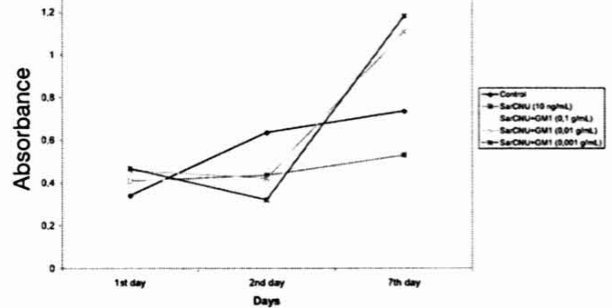The Effects of Combined SarCNU and Ganglioside Treatment of Growth of C6 Glioma Cell Cultures
DOI:
https://doi.org/10.17305/bjbms.1998.3608Keywords:
C6 glioma, SarCNU, Ganglioside GMI, cytotoxicity, antiproliferative effectsAbstract
In vitro antiproliferative effects of SarCNU and GMI ganglioside were tested in different concentration ratios in C6 glioma cell culture. Based on MTT assay and a protein assay, cytotoxicity of each agent separately and the two agents combined was tested. When the cells were treated with different concentrations of ganglioside ranging from 10-’ to 10-2, the number of viable cells decreased highly on days two and seven, regardless of the concentration of the agent applied. SarCNU, as expected, has caused antiproliferative effects which highly correlated with the concentration of the agent tested. When the C6 glioma cell culture was treated with the two agents combined in the optimal concentration causing the above mentioned cytotoxicity, effects observed did not correlate with those observed for each agent alone, suggesting in this case the expression of highly neuroprotective effects of ganglioside GMI.
Citations
Downloads

Published
Issue
Section
Categories
License
Copyright (c) 2018 Bosnian Journal of Basic Medical Sciences

This work is licensed under a Creative Commons Attribution 4.0 International License.
How to Cite
Accepted 2018-05-14
Published 1998-02-20









